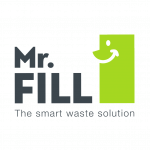The effect of waste on the environment
Litter on the street or in the surrounding bushes and grass can have a negative impact on the environment. Many do not know, however, just how big that impact really is. We see images of polluted beaches with washed up plastic, rivers full of floating trash and animals stuck in pieces of plastic almost every day. In this article we discuss multiple consequences of all this litter, the situation in the Netherlands and also how we can solve these issues.
Is there a waste issue in the Netherlands?
According to the CBS, the Dutch bureau for statistics, the Dutch people produce almost 500 kilos of trash every year. In 2018, that added up to over 8.5 billion kilos of household trash. An incredibly vast figure which is almost too big to comprehend. This equals about 2250 Jumbo Jets, the largest airplane in the world and sketches an image of the waste issues in the Netherlands.
Approximately 60% of this waste has been separated before collection, making it easy to recycle. This saves raw material and provides lots of energy, making the trash a valuable resource itself. This means that the Dutch are already pretty good at separating trash, but they could do a whole lot better too. About 40% of the trash is not separated before it is deposited and that’s pretty bad for the environment.
Separating trash becomes increasingly difficult when all of it is in one large pile. Therefore these piles are often simply burned, which generates a lot of carbon emission. According to the calculations of Milieu Centraal, it should be possible to separate approximately 80% of all our trash which shows there is a lot of room for improvement.
What are the consequences of litter for our environment?
Litter is terribly bad for humans, animals and the environment. It is characterized by the property of not being able to break itself down over time, which causes it to stay in the environment for dozens upon dozens of years. Birds, fish and other animals often mistake the litter for food which has a lot of dangerous consequences. Especially plastic has a large, harmful effect. It becomes brittle and turns into tiny, sand-like parts called micro plastic. This micro plastic ends up in our rivers and seas where fish and shellfish eat it. This causes to microplastic to end up on our own plates as well through the food chain.
Every year over 100.000 aquatic mammals and at least a million sea birds die because of the litter that ended up in the oceans. Over 8 million tons of trash end up in the water which, by now, has earned it the dubious nickname of plastic soup. A huge area of floating trash.
On land the litter has a large impact on nature as well. Deer, hedgehogs and even cats can choke on the pieces of plastic they ingest. It is time to ban this problem once and for all.
What kind of solutions are there for this issue?
The Netherlands as a country have huge ambitions when it comes to litter and would love to apply itself to drastically reduce the amount of litter in a few years’ time from now. A nice example of this is the new policy in which the goal is set to reduce the amount of plastic bottle in litter with at least 90%.
Mr. Fill is another sustainable product that can help solve the waste issues in the Netherlands. With this solution it becomes much easier to collect waste in the public space and as such prevent this waste from entering our environment. The self-compressing bins by Mr. Fill are designed and developed in the Netherlands to reduce the amount of litter on the streets by a large amount.
